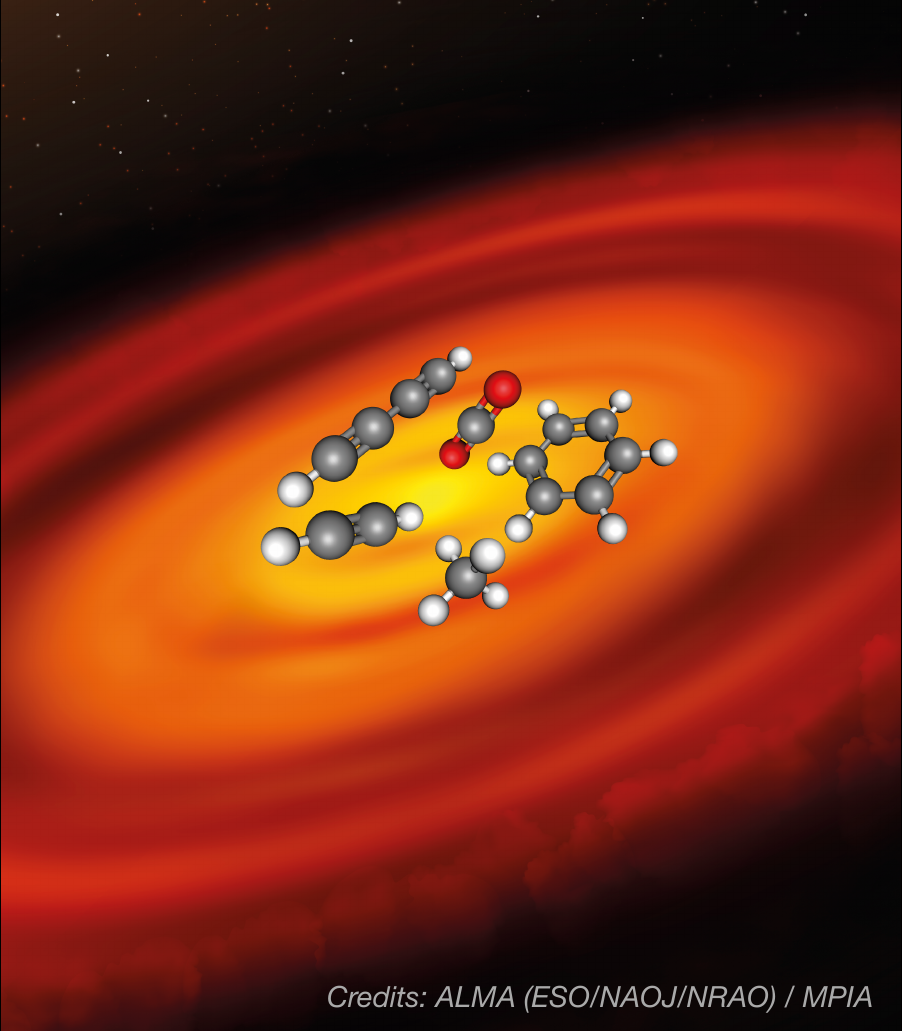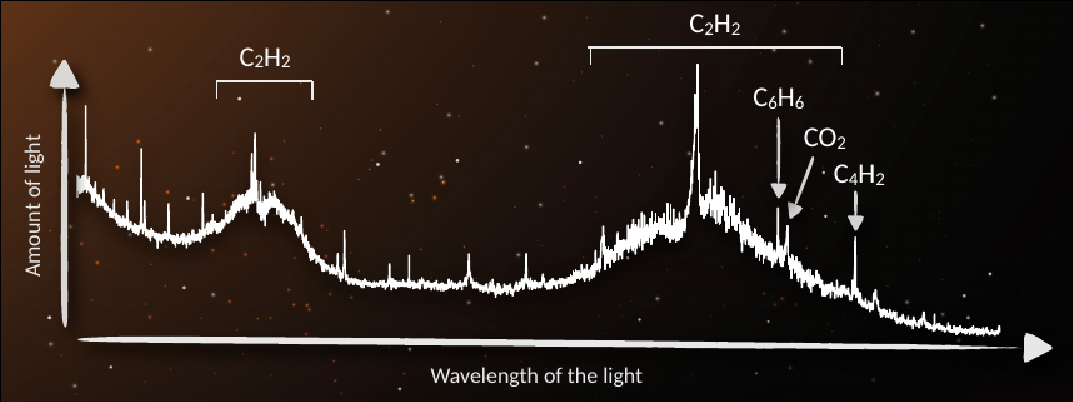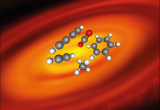JWST reveals the composition of a protoplanetary disk
An international research team involving the IAS has just revealed the chemical composition of a disk of matter rotating around a young star, where new planets are forming. The results of this study, led by Benoît Tabone, a CNRS researcher at the IAS, were obtained in the framework of the guaranteed time programme of the MIRI instrument developed by a consortium of laboratories in Europe and the United States.
The particularity of this disk is that it orbits a very low-mass star, 5 to 10 times less massive than our Sun, a type of star that harbours potentially habitable rocky planets in abundance, as shown by the famous Trappist-I exoplanet system. Surprisingly, this disc is extremely rich in gas-phase hydrocarbons, with two molecules from this family even detected for the first time in a disk: benzene (C₆H₆) and diacetylene (C₄H₂). In contrast, oxygen-rich molecules such as carbon dioxide (CO₂) and water (H₂O) are very rare. This surprising chemical composition is probably due to the destruction of carbonaceous grains in the disc, which releases carbon in the gas phase. This would imply that the rocky planets formed in this disc are poor in carbon, just like our Earth.
This study casts a new light on the emergence of habitable planets and gives a first glimpse at the potential of JWST in this domain.

Link: CNRS press release.
Article scientifique: A rich hydrocarbon chemistry and high C to O ratio in the inner disk around a very low-mass star. Tabone et al. Nature Astronomy, 2023. DOI:10.1038/s41550-023-01965-3
Contact at IAS: Benoît Tabone

The MIRI spectrum of the star J160532. The emission lines of benzene (C₆H₆), diacetylene (C₄H₂) and carbon dioxide (CO₂) appear as narrow peaks in the spectrum. Acetylene is so abundant that it produces two broad bumps in the spectrum. This is indicative of the predominance of hydrocarbons in the disc. Water emission, commonly seen in other discs, is weak or absent. © Benoît Tabone/MINDS consortium/NASA/ESA.




